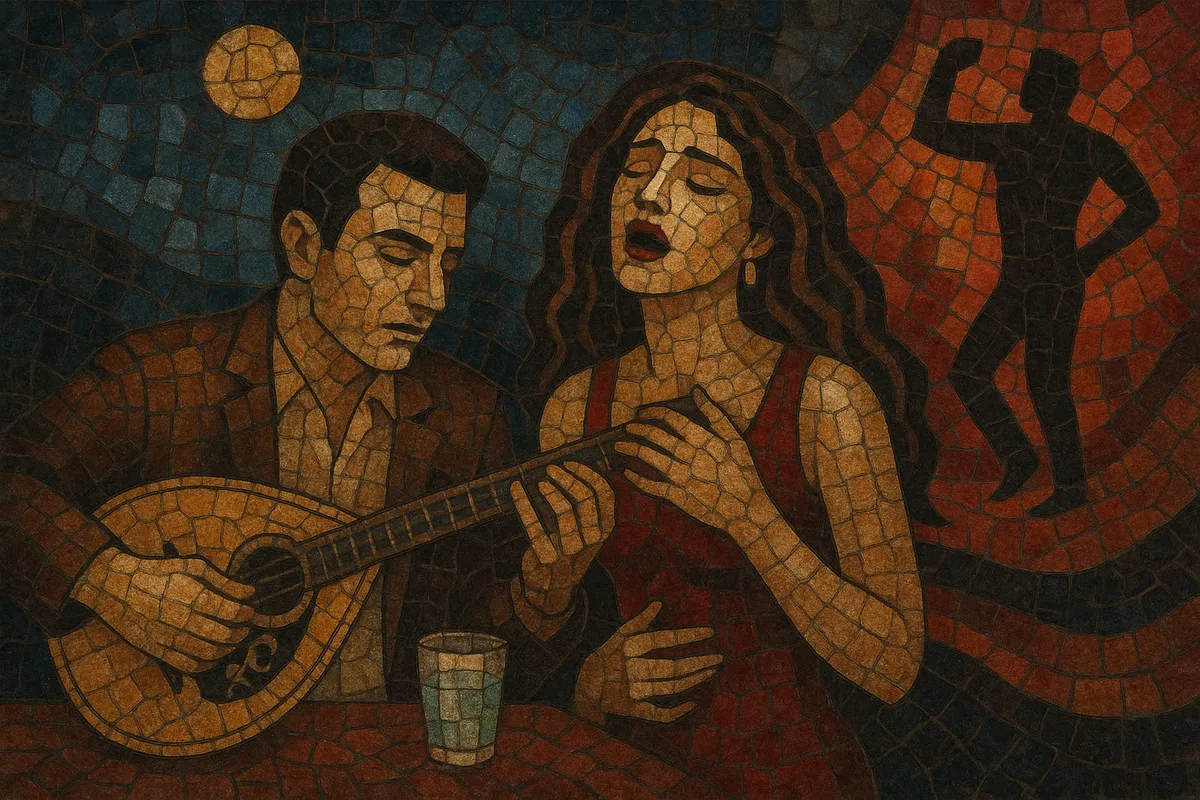Skiladika (σκυλάδικα) refers to a strain of modern Greek laïkó-pop associated with loud nightclubs and highway bouzoukia venues. The sound blends electrified bouzouki, glossy synths, drum machines, and highly melismatic vocals to deliver big, emotionally direct songs about love, jealousy, nightlife, and bravado.
Musically, it sits at the “poppiest” and most theatrical end of laïkó: minor-key progressions, Phrygian-dominant flavors, sweeping strings, and key-change finales are common. In clubs, the performance is part of the experience—flower-throwing, table-dancing, and extended medleys that keep the dancefloor moving through zeibekiko and tsifteteli grooves.
Skiladika emerged as a club-focused, mass-market branch of Greek laïkó, prized for its high-energy shows and extravagant sentiment. While often critiqued by purists, it became a defining nightlife soundtrack for late-20th‑century Greece.
In the 1980s, amplified bouzouki bands absorbed pop production—synthesizers, drum machines, and disco/dance-pop grooves—into laïkó. Rebetiko and older laïkó provided song forms and vocal ornamentation, while Greek folk idioms colored melodies and modes. The term “skiladika,” originally pejorative, stuck to describe the louder, more sensational club end of the scene.
Private TV, major labels, and the rise of large bouzoukia nightlife venues helped propel skiladika to mainstream dominance. Artists headlined multi-hour shows with medleys, call‑and‑response, and theatrical gestures (flower-throwing replacing plate-smashing). Production aesthetics grew glossier: string pads, gated reverbs, chorused electric bouzouki, and key-change finales aimed squarely at peak-hour club drama.
Throughout the 1990s and 2000s, skiladika intersected with Balkan pop‑folk currents (and shared some aesthetics with Serbian turbo-folk), while remaining distinctly Greek in language, melodic turns, and rhythms. Critics debated its commercialism and lyrical directness, but its club energy, sing‑along hooks, and dance frameworks made it enduring.
Contemporary pop‑laïkó continues to borrow skiladika’s formula—anthemic choruses, bouzouki‑plus‑synth timbres, and dancefloor‑ready beats—while updating production with modern EDM polish. The venues and late‑night culture remain an integral part of how the music is experienced.


